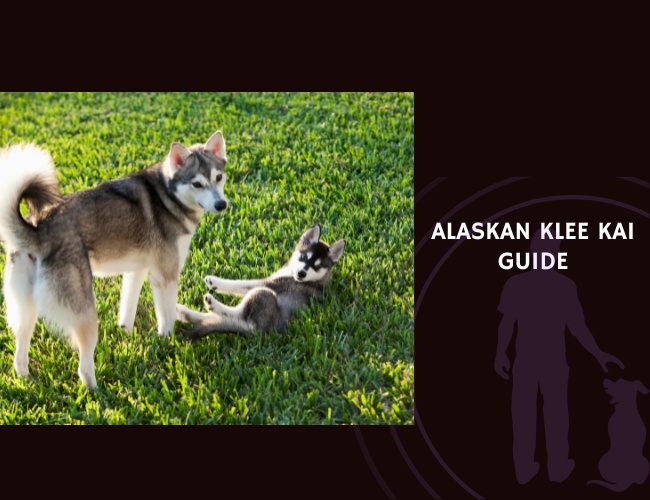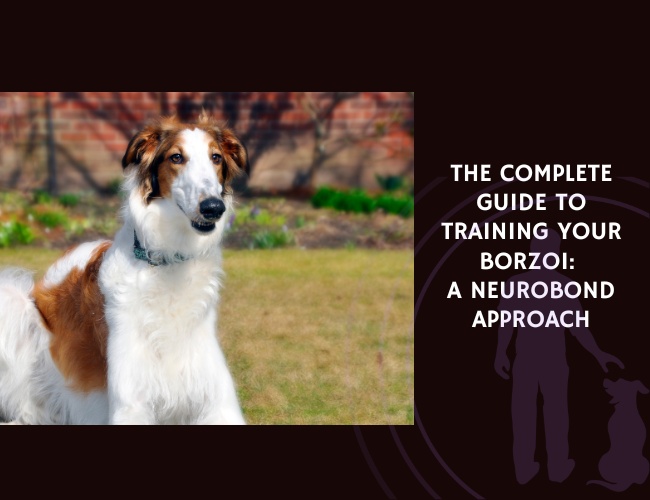Introduction
Have you ever dreamed of owning a husky but felt overwhelmed by their size and exercise demands? Let us guide you through the fascinating world of the Alaskan Klee Kai – a breed that captures all the striking beauty and intelligence of northern dogs in a perfectly compact package. Born from one breeder’s vision in 1970s Alaska, these remarkable companions have evolved into one of the most intriguing small breeds available today.
The Alaskan Klee Kai, whose name means “small dog” in Inuit, represents a careful balance between preserving the wolf-like appearance of their larger cousins and creating a manageable companion for modern living. Unlike many toy breeds developed purely for companionship, the Klee Kai retains the sharp intelligence, alertness, and independent spirit that makes northern breeds so captivating – just in a size that fits comfortably in your lap.
What makes these dogs truly special isn’t just their stunning appearance or convenient size. It’s their complex personality that combines fierce loyalty with independent thinking, creating a companion that’s both devoted and delightfully challenging. You might notice your Klee Kai watching you with those intense, intelligent eyes, seeming to understand every word while simultaneously deciding whether your request is worth following. This blend of characteristics creates a uniquely rewarding relationship for those who understand and appreciate their nature. 🐾
Character & Behaviour: Understanding Your Miniature Northern Spirit
The Historical Journey from Alaska to Your Home
The story of the Alaskan Klee Kai begins with Linda Spurlin’s chance encounter with an undersized husky-type dog in Oklahoma. This meeting sparked a vision that would take nearly two decades to realize – creating a companion-sized northern breed that maintained the striking appearance and keen intelligence of the Alaskan Husky without the overwhelming exercise requirements and space needs.
Spurlin’s breeding program in Wasilla, Alaska, wasn’t simply about shrinking a husky. She carefully selected Alaskan and Siberian Huskies for their temperament and appearance, then introduced Schipperke and American Eskimo Dogs to achieve size reduction while maintaining the distinctive spitz characteristics. Each generation was evaluated not just for size, but for health, temperament, and that special “northern breed” quality that makes these dogs so captivating.
Did you know that the breed remained closely guarded until 1988? Spurlin was protective of her developing breed, ensuring that only dogs meeting her exacting standards would carry on the Klee Kai name. This careful stewardship resulted in a breed that achieved United Kennel Club recognition in 1997 – a remarkably quick rise for such a young breed.
Decoding the Klee Kai Temperament
Your Klee Kai’s personality unfolds like a complex novel – each chapter revealing new depths and surprises. Unlike the gregarious Siberian Husky who greets everyone as a potential best friend, your Klee Kai approaches the world with measured caution and selective affection.
At home with family, these dogs transform into devoted shadows, following their chosen person from room to room with an intensity that can feel almost protective. This attachment runs deeper than simple companionship – it’s a bond built on mutual respect and understanding. You might find your Klee Kai studying your routines, anticipating your needs, and even attempting to “herd” family members together during gatherings.
With strangers, however, a different dog emerges. That confident companion who rules your household may suddenly become aloof, watchful, or even shy. This isn’t a flaw – it’s a deeply ingrained trait that served their ancestors well in harsh northern environments where caution meant survival. Understanding this duality helps you support your dog through social situations without forcing interactions that make them uncomfortable.
The independent thinking that characterizes northern breeds shines through in every interaction. Your Klee Kai won’t blindly follow commands like a eager-to-please retriever. Instead, they evaluate each request, weighing the benefit against their current priorities. This might frustrate owners expecting instant obedience, but those who appreciate this thoughtful nature find it endlessly engaging.
The Brilliant Mind Behind Those Piercing Eyes
The cognitive abilities of the Alaskan Klee Kai often surprise even experienced dog owners. These dogs demonstrate what researchers call “adaptive intelligence” – the ability to solve problems independently and learn from their environment without direct instruction.
Problem-solving behaviors emerge early and persistently. Your Klee Kai might figure out how to open cabinet doors to access treats, manipulate latches to escape confinement, or create elaborate games using household objects. One owner reported their Klee Kai learned to drag a chair to the counter to reach forbidden food – showing not just intelligence but planning ability.
Pattern recognition plays a huge role in their daily life. They quickly memorize routines, often alerting you to deviations before you notice them yourself. Miss their usual 5 PM walk by ten minutes? Your Klee Kai will ensure you remember with pointed stares, dramatic sighs, or strategic positioning by the door.
This intelligence demands respect and engagement. An under-stimulated Klee Kai becomes an escape artist, a destructive force, or a neurotic bundle of anxiety. But when properly channeled through training, puzzles, and activities, this brilliant mind becomes your greatest ally in building a remarkable partnership.
Vocalization & Communication: Learning to Speak ‘Klee Kai’
The Symphony of Sounds
If you’re expecting a quiet companion, the Alaskan Klee Kai might surprise you with their extensive vocal repertoire. These dogs don’t just bark – they create an entire symphony of sounds that would make their husky ancestors proud.
The famous “woo-woo” serves as their primary conversational tool. Unlike barking, which typically signals alarm or excitement, the woo-woo is pure communication. Your Klee Kai might woo-woo to greet you after work, express opinions about dinner timing, or engage in full conversations about the weather. Each dog develops their own variation, with some producing melodious songs while others sound more like rusty gates – but always with enthusiasm.
Howling behaviors connect your miniature companion to their wild heritage. Triggered by sirens, music, or sometimes just the mood of the moment, a Klee Kai howl can be surprisingly powerful for such a small dog. Many owners report their dogs howling along to specific songs or joining in when they sing, creating charming duets that strengthen the human-canine bond.
Alert barking represents the more practical side of their vocal nature. With their heightened vigilance, Klee Kais excel as watchdogs, alerting you to everything from approaching visitors to suspicious leaves blowing past the window. The challenge lies not in getting them to bark, but in teaching them when to stop.
Understanding Body Language Signals
While vocalizations grab attention, the subtle art of Klee Kai body language tells deeper stories. Learning to read these signals helps you understand your dog’s emotional state and respond appropriately.
Tail positions provide constant commentary on your dog’s feelings. A high, curled tail signals confidence and alertness. A tucked tail indicates anxiety or submission. But the most telling sign? The helicopter tail – a circular wagging motion that appears during peak excitement, usually reserved for favorite people or the promise of adventures.
Ear movements act like emotional barometers. Forward-facing ears show interest and engagement. Pinned back ears might indicate fear, submission, or sometimes just streamlined positioning during zoomies. The constant swiveling of their radar-dish ears as they track household sounds reveals their ever-vigilant nature.
The “Klee Kai lean” deserves special mention. When truly comfortable, these typically aloof dogs will lean their entire body weight against their chosen person – a gesture of complete trust and affection that feels even more special given their usual independence. 🧡
Training & Education: Shaping Your Clever Companion
The Critical Window of Early Socialization
The first 14 weeks of your Klee Kai’s life lay the foundation for their entire future temperament. Miss this window, and you might spend years trying to overcome fearfulness or reactivity that could have been prevented with proper early exposure.
Creating positive associations requires thoughtful planning. Each new experience should end with your puppy feeling safe and rewarded. Meeting new people? Have strangers offer special treats while respecting your puppy’s space. Encountering other dogs? Choose calm, well-socialized adults who won’t overwhelm your sensitive youngster.
Your socialization checklist should include exposure to:
- Various surfaces (grass, concrete, metal grates, sand)
- Different types of people (children, elderly, people with mobility aids, various ethnicities)
- Household sounds (vacuum, doorbell, washing machine, smoke detectors)
- Handling exercises (paw touching, ear checks, teeth examination)
- Brief alone time (starting with seconds, building to minutes)
The secondary socialization period from 3-6 months shouldn’t be overlooked. While the most critical window has passed, continued positive exposures during this time help cement confidence. Many Klee Kai owners report a “fear period” around 4-5 months where previously accepted stimuli suddenly become scary. Patient, positive reinforcement during this phase prevents lasting anxiety.

Building Trust Through Positive Training
Traditional dominance-based training methods fail spectacularly with the Alaskan Klee Kai. These sensitive, intelligent dogs shut down when faced with harsh corrections or confrontational techniques. Instead, they thrive with positive reinforcement that respects their intelligence and builds mutual trust.
Reward timing makes or breaks training success. Klee Kais process information quickly, so your reward must come within 1-2 seconds of the desired behavior. Too slow, and they’ve already moved on mentally, missing the connection between action and consequence.
Variable reward schedules prevent boredom while maintaining motivation. Once your Klee Kai masters a command, don’t reward every repetition. Instead, reward randomly – sometimes after one correct response, sometimes after three. This unpredictability keeps them engaged and actually strengthens the behavior more than constant rewards.
The most effective rewards vary by individual:
- Food-motivated dogs respond to tiny, high-value treats (freeze-dried liver, cheese, fish)
- Play-motivated dogs prefer tug sessions or ball tosses
- Affection-motivated dogs value enthusiastic praise and brief petting
- Environment-motivated dogs earn access to sniffing spots or continued walks
Mastering Recall with an Independent Thinker
Teaching reliable recall to a Klee Kai requires accepting an uncomfortable truth: you may never achieve 100% reliability in all situations. Their combination of high prey drive, independent nature, and selective hearing means most Klee Kais need lifelong management around distractions.
Long-line training provides the foundation for recall work. Using a 30-50 foot leash allows practice in increasingly distracting environments while preventing failure. Start in boring locations like empty parking lots, gradually progressing to more challenging environments only when success rates exceed 90%.
The “recall game” turns coming when called into the best part of your dog’s day. Have family members stand apart in a secured area, taking turns calling your Klee Kai with excitement and rewards. The dog learns that responding to their name means fantastic things happen, building positive associations that compete with environmental distractions.
Emergency recall requires a special cue reserved for true emergencies. Choose a unique word or sound (whistle, unusual word like “pancakes!”), pair it with incredibly high-value rewards (an entire handful of treats, special toy that only appears for this), and practice sparingly to maintain its power. This gives you one reliable tool for critical situations.
Channeling Energy Through Dog Sports
The combination of intelligence, athleticism, and food motivation makes Alaskan Klee Kais natural candidates for various dog sports. These activities provide crucial mental stimulation while strengthening your bond through teamwork.
Agility showcases their natural athleticism and problem-solving abilities. Their small size allows them to compete in preferred height classes, often giving them advantages over larger dogs. The mental challenge of remembering courses combined with physical exercise creates perfectly tired Klee Kais.
Nose work taps into primitive hunting instincts in a controlled, rewarding way. Starting with finding treats in boxes progresses to identifying specific scents, providing intense mental stimulation that satisfies their need to work independently while still partnering with you.
Trick training appeals to their desire to problem-solve for rewards. Complex tricks like opening doors, bringing specific objects, or multi-step sequences engage their intelligence while impressing friends and family. Many Klee Kais have earned advanced trick dog titles, proving that small size doesn’t limit capability.
Nutritional Recommendations: Fueling Your Miniature Athlete
Understanding Small-Breed Metabolism
Your Alaskan Klee Kai’s nutritional needs differ significantly from both large breeds and typical toy dogs. Their northern heritage combines with small size to create unique metabolic demands that require careful attention.
Caloric density matters more than volume for these efficient little engines. While a Labrador might thrive on large portions of moderate-calorie food, your Klee Kai needs nutrient-dense options that deliver maximum nutrition in smaller quantities. Their stomach capacity limits portion sizes, yet their activity level demands substantial energy.
The typical adult Klee Kai weighing 15 pounds needs approximately 450-600 calories daily, depending on activity level. But here’s where it gets interesting – their metabolism can shift dramatically based on temperature, stress, and seasonal changes. You might notice your dog eating voraciously during winter months while picking at food during summer, reflecting ancestral patterns of their arctic ancestors.
Meal frequency impacts both energy levels and behavior. Most adult Klee Kais do best with two meals daily, preventing the blood sugar drops that can trigger anxiety or hyperactivity. Puppies need 3-4 smaller meals until six months old, supporting steady growth without overwhelming their tiny digestive systems.
Supporting the Double Coat from Within
That gorgeous double coat that makes your Klee Kai look like a miniature wolf requires specific nutritional support to maintain its health and appearance. Poor nutrition shows first in coat quality – dullness, excessive shedding, or dry skin signal that dietary adjustments are needed.
Omega fatty acids play the starring role in coat health. The ideal ratio of omega-6 to omega-3 should fall between 5:1 and 10:1, supporting skin barrier function while controlling inflammation. Wild-caught fish, fish oil supplements, or foods enriched with salmon oil provide these crucial nutrients. You’ll know you’ve hit the right balance when your Klee Kai’s coat gleams and feels silky, not greasy or dry.
Protein quality directly impacts coat growth and structure. Look for named meat sources (chicken, salmon, lamb) as the first ingredient, providing the amino acids necessary for keratin production. Some Klee Kais thrive on rotating protein sources, preventing sensitivities while ensuring complete amino acid profiles.
During shedding seasons – and yes, these small dogs shed impressively – increasing omega-3 supplementation can reduce the duration and intensity of coat blowing. Adding a teaspoon of coconut oil or sardines to meals during these periods supports skin health while potentially reducing the tumbleweeds of fur decorating your home. 🐾
Striking. Compact. Complex.
A vision made real. Born in Alaska in the 1970s, the Alaskan Klee Kai preserves husky beauty and intelligence in a smaller, manageable form without losing northern spirit.
Caution shapes character. Loyal and devoted at home yet reserved with strangers, they balance fierce attachment with survival-rooted wariness, creating a dog of dual nature.
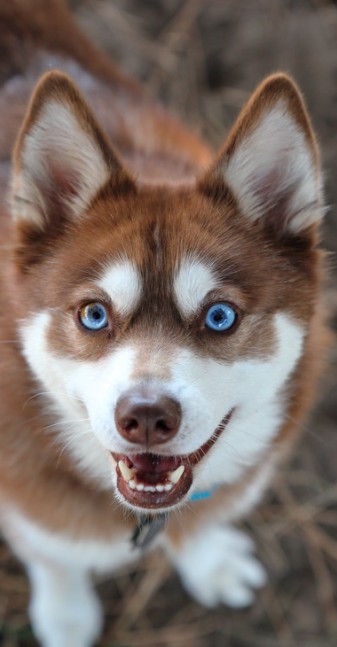
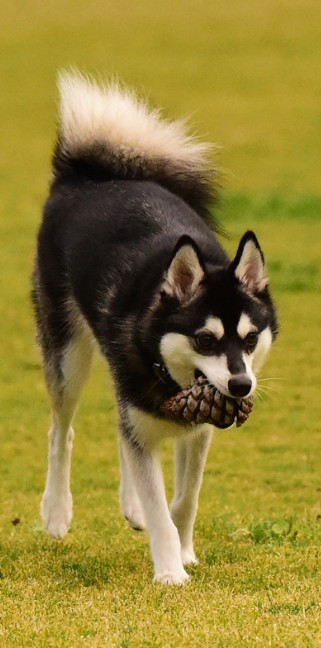
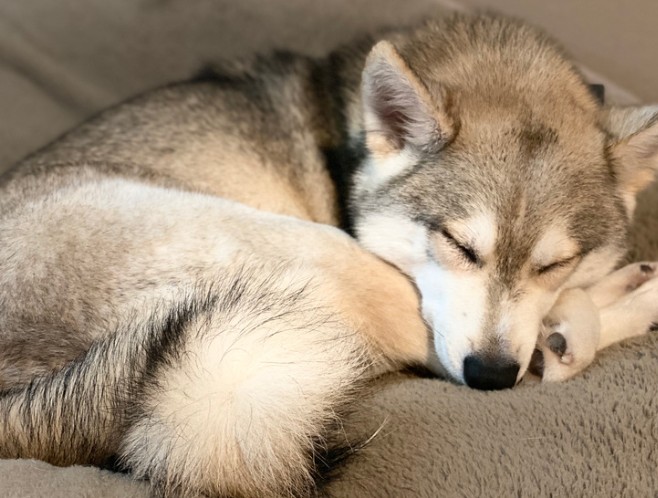
Intelligence fuels the bond. Keen-eyed and perceptive, they study routines and anticipate needs, forming deep connections with chosen humans while challenging them with independence.
Navigating Food Sensitivities and Digestive Health
The sensitive nature that defines Klee Kai temperament extends to their digestive systems. Many owners report their dogs developing food sensitivities, particularly to common proteins like chicken or beef, or experiencing stress-related digestive upset.
Identifying triggers requires systematic observation. Keep a food diary noting ingredients, treats, and any digestive symptoms. Common signs of food sensitivity include chronic ear infections, excessive paw licking, intermittent soft stools, or recurring anal gland issues. These subtle signs often precede more obvious allergic reactions.
Novel protein diets offer solutions for sensitive individuals. Proteins your dog hasn’t previously encountered – venison, rabbit, kangaroo – reduce the likelihood of reactions. Limited ingredient diets simplify identification of triggers while providing complete nutrition.
The role of probiotics and digestive enzymes shouldn’t be underestimated. The Klee Kai’s sensitive nature means stress quickly impacts gut health. Daily probiotic supplementation maintains beneficial bacteria populations, while digestive enzymes aid nutrient absorption – particularly important for dogs who gulp food or experience anxiety around mealtimes.
Life Stage Nutrition: From Puppy to Senior
Puppy nutrition (0-12 months) demands careful balance. Rapid growth requires adequate calories and calcium, but excessive amounts cause developmental orthopedic problems. Choose small-breed puppy formulas that control growth rate while supporting brain development through DHA supplementation.
Your Klee Kai puppy’s nutritional needs include:
- Protein: 28-32% to support muscle development
- Fat: 15-20% for energy and brain development
- Calcium: 1.2-1.5% with proper phosphorus ratios
- DHA: Minimum 0.05% for cognitive development
- Small kibble size preventing choking
Adult maintenance (1-7 years) focuses on preventing obesity while maintaining condition. The tendency toward weight gain increases after spaying/neutering, requiring calorie adjustments. Monitor body condition score monthly – you should easily feel ribs with light pressure and see a defined waist from above.
Senior support (8+ years) addresses changing metabolism and emerging health concerns. Reduced calorie density prevents weight gain as activity decreases. Enhanced antioxidants combat cellular aging. Joint support ingredients like glucosamine become increasingly important. Many senior Klee Kais benefit from warming food slightly, enhancing aroma and palatability as sense of smell diminishes.
Health & Wellness: Protecting Your Precious Companion
Understanding Breed-Specific Health Concerns
While generally healthy with a 13-15 year lifespan, the Alaskan Klee Kai faces several breed-specific health challenges that informed owners should monitor. Understanding these conditions helps you provide preventive care and early intervention when needed.
Patellar luxation affects 5-10% of Klee Kais, causing the kneecap to dislocate from its normal position. You might notice your dog suddenly skipping or carrying a rear leg during walks, then returning to normal gait moments later. Early grades respond to weight management and muscle-building exercises, while severe cases require surgical correction. Regular veterinary examinations catch this condition before it causes arthritis or permanent lameness.
Juvenile cataracts represent one of the more serious inherited conditions, potentially appearing as early as six months. Watch for cloudiness in your young dog’s eyes or signs of vision impairment like bumping into furniture or hesitation in dim light. While surgery can restore vision, prevention through responsible breeding practices remains the best approach.
Factor VII deficiency, a blood clotting disorder, occurs in some lines. Most affected dogs live normal lives, but knowledge of their status becomes crucial before any surgery. Simple blood tests identify carriers and affected dogs, allowing for appropriate medical planning.
Maintaining Dental Health in Small Mouths
The Klee Kai’s small mouth creates perfect conditions for dental disease. By age three, 60% of dogs without preventive care show signs of periodontal disease – a sobering statistic that should motivate proactive dental care.
Retained deciduous teeth plague 20-30% of Klee Kai puppies. These baby teeth that fail to fall out create crowding, trap food and bacteria, and accelerate dental disease. If your puppy still has baby teeth at seven months, surgical extraction prevents future complications.
Your dental health protocol should include:
- Daily brushing with enzymatic toothpaste
- Weekly dental chews containing enzymes or abrasives
- Water additives that reduce bacterial growth
- Annual professional cleanings under anesthesia
- Regular mouth inspections for broken teeth or gum inflammation
The investment in dental health pays dividends – preventing not just tooth loss but systemic infections that can damage heart and kidneys. Plus, nothing beats puppy breath that doesn’t clear a room! 😄
Exercise Needs: More Than Just Physical Activity
Despite their small stature, Alaskan Klee Kais require substantial daily exercise – both physical and mental. Understanding this balance prevents behavioral problems while maintaining optimal health.
Physical exercise needs vary by age and individual, but most adults require 60-90 minutes of activity daily. This doesn’t mean continuous running; rather, varied activities that engage different muscle groups and energy systems. A typical day might include a 30-minute morning walk, afternoon play session in the yard, and evening training or puzzle time.
Mental stimulation often matters more than physical exercise for these intelligent dogs. A physically tired but mentally bored Klee Kai becomes destructive, anxious, or develops obsessive behaviors. Puzzle feeders, scent games, training sessions, and novel experiences tire the mind in ways that simple walking cannot achieve.
The beauty of owning a Klee Kai lies in their adaptability – they’ll happily join you for a five-mile hike or settle for indoor games during bad weather. The key is consistency and variety, preventing both boredom and overexertion.
Managing Stress and Anxiety
The sensitive nature that makes Klee Kais such devoted companions also predisposes them to anxiety. Understanding stress triggers and management strategies helps maintain emotional wellness.
Separation anxiety affects many Klee Kais, manifesting as destructive behavior, excessive vocalization, or house soiling when left alone. Prevention starts early with gradual alone-time training, but established anxiety requires systematic desensitization. Some dogs benefit from calming supplements, compression garments, or in severe cases, anti-anxiety medications.
Environmental stressors that might not faze other breeds can overwhelm your sensitive Klee Kai. Thunderstorms, fireworks, construction noise, or even household tension trigger stress responses. Creating safe spaces, using white noise, and maintaining calm energy yourself helps your dog cope with unavoidable stressors.
Signs your Klee Kai is stressed include:
- Excessive panting without physical exertion
- Pacing or inability to settle
- Destructive chewing of non-toy items
- Loss of house training
- Excessive shedding or paw licking
- Decreased appetite or digestive upset

Lifestyle & Environment: Creating the Perfect Klee Kai Life
Apartment Living with a Vocal Breed
Can an Alaskan Klee Kai thrive in an apartment? Absolutely – with proper management and understanding neighbors. Their small size makes them physically suited for apartment life, but their vocal nature and exercise needs require thoughtful planning.
Sound management becomes your primary challenge. Those charming woo-woos and alert barks that delight you might infuriate neighbors. Training “quiet” commands from puppyhood, providing adequate exercise to reduce restlessness, and using white noise to mask external triggers help maintain peace. Some owners find success with ultrasonic bark deterrents during initial training, though these should supplement, not replace, positive training methods.
Creating enrichment in limited space challenges creativity. Vertical space becomes your friend – cat trees (yes, many Klee Kais love them), wall-mounted puzzle toys, and window perches provide entertainment without consuming floor space. Rotating toys weekly prevents boredom, while food puzzles turn mealtime into mental exercise.
The ideal apartment for a Klee Kai includes:
- Ground floor or elevator access for frequent potty breaks
- Nearby green spaces for exercise
- Understanding neighbors or good sound insulation
- Adequate storage for grooming supplies and toys
- Climate control for temperature-sensitive comfort
The Suburban Dream: Yards, Fences, and Freedom
Suburban living offers obvious advantages for Klee Kai ownership, but don’t assume a yard replaces structured exercise and engagement. Many owners discover their dogs ignore the yard unless accompanied, preferring indoor comfort to solo outdoor time.
Fencing requirements exceed what you’d expect for a 15-pound dog. These athletic escape artists can jump surprisingly high, climb chain link, and dig under barriers with determination. Minimum six-foot privacy fencing with dig guards provides basic security, though some individuals require additional measures like coyote rollers or lean-ins to prevent climbing.
Wildlife encounters pose genuine risks in suburban settings. Your Klee Kai’s prey drive doesn’t discriminate between appropriate chase objects and dangerous wildlife. Skunks, porcupines, and even aggressive squirrels can injure small dogs. Supervised outdoor time, even in fenced yards, prevents dangerous encounters while allowing natural behaviors.
Climate Considerations for Your Arctic Heritage Dog
That double coat evolved for Arctic conditions influences your Klee Kai’s comfort across seasons. Understanding their climate needs helps you provide appropriate care year-round.
Winter wonderland brings out the best in these northern breeds. Many Klee Kais transform into energetic puppies at the first snowfall, preferring outdoor activities in freezing temperatures that would send other small dogs running for warmth. Their coat provides remarkable insulation, allowing comfortable play in temperatures well below freezing. However, ice-melting chemicals require paw protection, and extreme cold still demands time limits.
Summer struggles require more management. While their coat provides some insulation against heat, Klee Kais lack the cooling efficiency of single-coated breeds. Exercise timing shifts to early morning and late evening. Cooling mats, kiddie pools, and air conditioning become essential. Never shave the double coat thinking it helps – this actually impairs temperature regulation and invites sunburn.
Signs of overheating requiring immediate action:
- Excessive panting with wide-open mouth
- Bright red gums or tongue
- Stumbling or weakness
- Vomiting or diarrhea
- Glazed eyes or confusion
Multi-Pet Households: Building Harmony
Introducing an Alaskan Klee Kai to existing pets or adding pets to your Klee Kai’s domain requires careful orchestration. Their personality traits – territorial nature, prey drive, and selective affection – influence integration success.
Dog-to-dog relationships work best with similar-sized, non-dominant companions. Many Klee Kais prefer opposite-sex housemates, though early socialization trumps gender preferences. The key lies in controlled introductions on neutral territory, allowing relationships to develop naturally without forced interactions.
Cats and small pets present unique challenges. While some Klee Kais coexist peacefully with cats, especially when raised together, others never overcome prey drive toward small, fast-moving animals. Even dog-savvy cats might trigger chase instincts. Small caged pets like rabbits or guinea pigs should remain completely separated, as stress from predator presence affects their health even without direct contact.
Success strategies for multi-pet homes:
- Separate feeding areas preventing resource guarding
- Individual attention time maintaining special bonds
- Safe spaces where each pet can retreat
- Consistent rules and boundaries for all pets
- Gradual introductions over weeks, not days
The Perfect Match: Are You Ready for a Klee Kai?
Honestly Assessing Your Lifestyle
Before falling in love with those striking blue eyes and wolf-like features, honestly evaluate whether your lifestyle aligns with Klee Kai needs. These aren’t dogs who adapt to any situation – they thrive with specific conditions and struggle without them.
Time commitment extends beyond basic care. Can you provide 60-90 minutes of daily exercise, regardless of weather? Will you engage in training throughout their lifetime, not just puppyhood? Do you have patience for a dog who might take months to warm up to your friends? These dogs don’t suit owners seeking occasional companionship – they need engaged, present partners.
Financial considerations go beyond purchase price. Quality food for a food-sensitive breed, regular grooming, potential behavioral consultation, and health screening create ongoing expenses. Pet insurance becomes almost mandatory given potential genetic conditions. Budget $150-300 monthly for routine care, with emergency funds for unexpected health issues.
Living situation stability matters more for sensitive Klee Kais than adaptable breeds. Frequent moves, changing schedules, or unpredictable households create anxiety. These dogs thrive on routine and struggle with chaos. If your life involves regular upheaval, consider whether subjecting a sensitive dog to that stress is fair.
The Rewards of Understanding
For the right owner, an Alaskan Klee Kai offers rewards that exceed the challenges. The bond you’ll develop with these selective dogs feels earned rather than given, making it incredibly special. Their intelligence keeps you engaged and entertained – you’ll never experience the monotony some find with less complex breeds.
The daily adventure of Klee Kai ownership brings constant discovery. Just when you think you understand your dog completely, they’ll reveal new quirks, develop fresh obsessions, or surprise you with unexpected sweetness. Their expressive faces and vocal commentary turn mundane activities into shared experiences.
The exclusive club of earning a Klee Kai’s trust feels like achieving something significant. When your typically aloof dog chooses to cuddle, when they finally accept that friend they’ve known for years, when they look at you with complete adoration – these moments carry weight because they’re not freely given to everyone.
Conclusion: Embracing the Klee Kai Journey
The Alaskan Klee Kai isn’t just a smaller husky or a designer toy breed – they’re a unique combination of northern heritage and companion breeding that creates something entirely special. These remarkable dogs challenge you to become a better owner, reward patience with devotion, and transform daily life into an adventure.
Success with a Klee Kai requires understanding their nature rather than fighting it. Accept that they’ll never be golden retrievers, eager to please everyone they meet. Embrace their independence while building partnership through trust and consistency. Celebrate their vocal nature as communication rather than nuisance. Most importantly, respect their sensitivity while helping them build confidence.
For those willing to invest time, energy, and understanding, the Alaskan Klee Kai offers an extraordinary companion experience. You’ll share your life with a dog who thinks, problem-solves, and chooses to be your partner rather than simply existing as your pet. The journey isn’t always easy – expect challenges, frustrations, and moments of doubt. But when your Klee Kai looks at you with those intelligent eyes, woo-woos their special greeting just for you, or curls up against you after a perfect day together, you’ll understand why their owners become so devoted to these miniature northern spirits.
Is an Alaskan Klee Kai right for you? If you’ve read this far and feel excited rather than overwhelmed by their needs, if their challenges sound like interesting puzzles rather than insurmountable obstacles, if you’re ready for a dog who’ll be your partner rather than just your pet – then yes, you might just be ready for the remarkable journey of Klee Kai ownership. Welcome to an adventure that will challenge, reward, and utterly transform your understanding of the human-canine bond. 🧡

